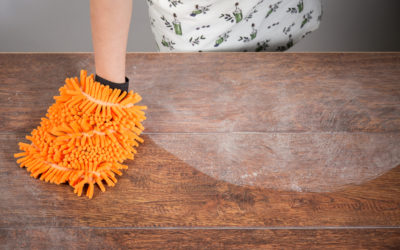Guest post by Allison Friedman, Founder, Rate It Green
You might notice poor air quality when you’re stuck in a line-up behind an old car, or passing by a smoker on the sidewalk. And public health officials and environmentalists spend a lot of time talking about smog and pollutants. But people rarely think aspirationally about good, healthy air quality, especially indoor air quality, or IAQ.
Great, clean air is air we can breathe with confidence for our health and comfort. Good air quality also means creating conditions that will not enable or encourage the growth or spread of pollutants indoors. We can work to reduce pollutants to acceptable, safe levels, and to maintain recommended levels of humidity and temperature in our homes. But above all, what most of us are really looking for is peace of mind and great health.
Why does Air Quality Matter?
Air pollution data show that 99% of the world’s population breathe unhealthy air. Air pollution aggravates asthma, especially in young children, and is one of the leading causes of disease and premature death in the developing world. Additional health effects include other respiratory illnesses: liver, kidney, and central nervous system damage; heart disease; cancers; pregnancy complications, memory loss, and depression; as well as immediate, short-term effects like eye, nose, throat, and even skin irritation; dizziness; coughing and shortness of breath; hypersensitivities and allergies; nausea; and fatigue. We’re really just starting to understand the relationship between air quality and cognition and processing speed. Children, the elderly, and people who are immune-compromised can be especially vulnerable to the effects of air pollution. In addition to human health effects, air pollution and particularly greenhouse gasses (GHGs) contribute significantly to climate change, as well as general environmental health and conditions.
Outdoors, air pollution is usually a mix of ground-level ozone (O3, a key smog component), carbon monoxide (CO), nitrogen oxides (NOx), sulfur dioxide (SO2), and particulate matter. Some pollution is caused in nature, but human processes produce most air pollution, including burning fossil fuels for energy, manufacturing and industrial processes, transportation, construction, building operations, agricultural activities, and deforestation. On days when the EPA declares outside air to be unhealthy, we can wear a mask or even remain indoors. At least refrain from outdoor exercise.
Why is Indoor Air Quality (IAQ) Important?
The COVID-19 pandemic and growing outbreaks of wildfires across the US have helped put the spotlight on IAQ. And building scientists have long focused on IAQ, with good reason. We spend up to 90% of our time indoors, where, as the EPA reported decades ago, the air can be up to 2 to 5 times more toxic than outdoor air (and many times more). Outdoor pollution can worsen IAQ though ventilation systems without proper filtration, or simply by opening doors and windows.
Indoor air quality is also affected by how our homes are designed and our activities inside the home. As homes are built and renovated increasingly “tight” to reduce air leakage and increase energy efficiency, it’s important to bring in sufficient fresh air through proper mechanical ventilation. Without proper ventilation and filtration, air can stagnate. Unhealthy pollutants can build up and become trapped indoors, and in our lungs.
It’s important to understand that what we do in our homes, and what we bring in can also cause harm. Fossil fuel–burning appliances produce emissions and have health risks. The furniture and products we buy can off-gas or release chemicals, especially when new. And there is increasing awareness that cooking without proper exhaust will increase pollutant levels.
Fortunately, we can take steps to improve the air we’re breathing and create a safe and healthy environment to live, work, and play inside. A good first step is to be aware of the sources of pollutants and your home. Second, you can explore ways to prevent, sequester, and ventilate these pollutants. And third, we all need to understand that this is emerging science. We can take some comfort and peace of mind with every step we take, and appreciate that we’re never done learning.
What Pollutants Affect IAQ?
Carbon Monoxide (CO)—A byproduct of fossil fuel combustion, carbon monoxide is a silent, and sometimes instant and tragic killer. Carbon monoxide detectors are available, affordable, and are increasingly part of building code requirements.
Nitrogen Dioxide (NO2)—Nitrogen dioxide is also a byproduct of fossil fuel combustion, often building up inside homes due to cooking and heating with natural gas. Studies show that homes with gas stoves have 50% to 400% higher average NO2 levels, often exceeding recommended outdoor limits of toxic chemicals. High NO2 levels have been associated with rising respiratory ailments, including asthma and lung disease.
Radon—Like carbon monoxide, radon is a silent, odorless gas. But unlike carbon monoxide, the harmful health effects of radon can build over long-term exposure. Most of us don’t know that radon is a leading cause of lung cancer.
Volatile Organic Compounds (VOCs)—VOCs are a complicated class of chemicals that are emitted, or released, as gases from certain solids and liquids. VOCs combine with other chemicals to create new pollutants including ozone (O3), a key smog component. Common VOCs include acetone, benzene, butanol, ethanol, formaldehyde, methanol, and toluene. VOCs are generated from fossil-fuel combustion and manufacturing and industrial processes (and some natural processes). They come from hundreds of products you might find in your home: paints, carpeting, cleaners, glues, pesticides, air fresheners, and even plywood and electronics. VOCs evaporate or “off-gas” from many building materials and household items at room temperature, and may increase off-gassing when they are new or at higher temperatures. If your new carpeting or mattress has a strong smell, you’re likely breathing in VOCs. Health effects vary by VOC and include eye, nose, and throat irritation, breathing difficulties and nausea, central nervous system and other organ damage, and cancer.
Particulates/Particulate Matter (PM)—Fine particles such as dust, ash, or smoke are very light and can remain suspended in the air. Your body’s defenses have a great natural ability to stop particles larger than 10 PM (that’s >10 micrometers) from entering your respiratory tract. So experts focus on the hazards of smaller particles that impact IAQ. PM 2.5 particles (2.5 microns or smaller) are about 30 times smaller than a human hair. These super-fine particles suspended in the air can lodge deep in your lungs or even make their way into your bloodstream, causing both short and long-term health effects.
Biological contaminants—Bacteria and viruses; animal and insect dander, saliva, and urine; dust mites; pollen; mold; and exhaled carbon dioxide (CO2) can all pose health hazards. For sensitive persons, biological contaminants often cause allergic symptoms, which range from mild to life-threatening. Poor air circulation and unfavorable humidity and temperature levels can promote the spread of pathogens or create conditions under which various biological contaminants can thrive. Sure, carbon dioxide is a natural byproduct of breathing, but a buildup of carbon dioxide can result in lethargy, headaches, and impaired cognitive function. We’re still learning the full, long-term effects of excess CO2 exposure.
Inherently dangerous materials—Materials like lead and asbestos are inherently toxic. Left undisturbed, some of these materials may never affect your IAQ or your health. But they can be inhaled or ingested when disturbed during a simple repair or renovation, or when their condition deteriorates.



How Do They Get In?
Direct Ventilation—When we open a window or provide mechanical ventilation, we bring outside air into our buildings. If the outside air quality is high, direct ventilation can dilute or remove indoor pollutants, improving IAQ. As we’re learning though, when outdoor air quality is low, direct ventilation can worsen IAQ.
Infiltration—Some pollutants will infiltrate our homes through cracks in the walls or foundation, or through imperfectly sealed openings. Radon and other soil gases typically come up through the foundation and other openings. They can build to unsafe levels without proper mitigation.
Inadequate air controls—Inadequate filtration in air-handling equipment and poor temperature and humidity management can lead to high pollutant levels, especially where we’re burning fossil fuels indoors.
Indoor combustion—Burning fossil fuels inside buildings generates toxins that can build and increase health risks if not properly ventilated. Gas and oil heating and cooling equipment, gas water heaters, gas cooktops, gas dryers, and fireplaces are the top combustion pollution sources.
Off-gassing—Products we bring into our homes are often made up of chemicals that have some associated health risks. These include furniture and decorative items, cleaning and other chemicals, personal care products, even clothing. Items that you bring into your home should disclose their contents and be evaluated for VOCs and their potential to break down over time.
Construction—When we build, repair, and renovate, we also kick up dust and other particulate matter into the air. Different materials must be handled and stored properly, and appropriate ventilation and shielding practices must be maintained.
Normal activities—Some pollutants are the result of what we think of as everyday, “normal” activities. Occupants create dust. Cooking creates particulate matter. Heck, even breathing generates CO2. Some people also still smoke and vape, bringing secondhand and thirdhand smoke indoors.
How Do I Know If I Have Unhealthy IAQ?


Because so many pollutants are invisible and do not smell, it’s not always easy to tell if we have IAQ concerns. One recommendation is to “check your building and yourself.”
- Do you regularly experience headaches, nausea, dizziness, or breathing difficulties at home? Do you feel better after you leave?
- Do you smell strong musty or chemical-type smells?
- Did you recently buy new furniture or carpeting?
- Have you recently painted or undertaken construction?
- Do you store chemical items like insecticides, paints, or solvents? Do you use them regularly?
- Is your space particularly humid?
- Do you see any visible problems like excessive dust, flakes, mold, or mildew?
- Do you see evidence of leaks or flooding, or see standing water?
- What types of cleaning chemicals are being used in the air or on surfaces and textiles?
- Where is fossil fuel combustion taking place inside this building?
- What are the measures for controlling ventilation, filtration, humidity, and even temperature?
- How is the outside air quality in this area, and how and when does that seem to vary?
A challenge is that, in all likelihood, these questions raise health concerns for most people. This check is just a start. You can also invest in air-quality monitoring to gather more information, or bring in a building performance professional to assess your IAQ.
What Can Homeowners Do to Improve IAQ?
Don’t panic! First understand your risks and how to reduce them to manageable, safe levels. Fortunately, there are steps we can all take to manage IAQ—some easy and some more intensive. At a high, simplified level, there are three top strategies we can employ to reduce indoor air pollutants:
- Increase ventilation and provide appropriate filtration.
- Manage temperature and humidity to ideal levels.
- Control (reduce) the source:
- Try not to bring pollutants into the indoor environment in the first place, and
- Remove pollutants where reasonably possible.
We’ll touch on more specific actions, with air-quality monitoring listed last but not least. Air-quality monitoring is an emerging technology, but it’s potentially game-changing in terms of making air quality information accessible in ways not previously possible.
Heating, Ventilation and Air Conditioning (HVAC), and Plumbing
Make sure that your ventilation systems are designed, maintained, and operated properly. Consult an HVAC professional (or more than one) before you make any changes. These systems need to be designed and sized correctly, regularly serviced, and operated properly (which includes being in working order). Properly maintain HVAC and plumbing with regard to slow or standing water in systems.
Note that you can’t just stick a more efficient filter on an existing system, as this can cause other problems like an air pressure drop or even system stress or failure. Install a high-efficiency filter only with the advice/approval of a qualified professional. MERV 13 or higher (Minimum Efficiency Reporting Value) is ideal, as it traps even tiny particles, including viruses. Be careful that air vents are open and never blocked by items or furniture.
Finished basements aren’t finished until proper HVAC and leak control/drainage are assured. Unfinished areas like attics and crawl spaces still need to be ventilated or properly encapsulated.
Learn when and how untreated outside air will help, or harm, your IAQ. Areas with vehicle or appliance exhaust should be separate from occupied indoor spaces, and ventilated separately. It’s important to exhaust other indoor pollutants properly, such as bathroom steam or workspace chemicals. Always use exhaust fans when cooking; cooking produces more chemicals and fumes than most people can imagine.
Inspect fireplaces, chimneys, and caps regularly, and remove soot and creosote. Perhaps refrain from burning wood indoors entirely. Smoke or vape outdoors (or not at all).
To prevent moisture build-up over time, keep humidity ideally between 30% and 60%, or 40% to 50% and maintain consistent temperature, ideally to between 60°F and 80°F.
Cleaning and Maintenance
In addition to cleaning and maintaining HVAC systems, regular and effective cleaning of your living areas will raise IAQ, as cleaning helps manage dust, dust mites, pollens, animal dander, and other allergens. Asking occupants and guests to remove their shoes will also help manage dust, pollen, and mold—a valuable hygiene lesson from Asian cultures.
Make sure your vacuum uses a HEPA filter or better, so that you are not just recirculating dust and other particulate matter into the air. Or use a central vacuum, if possible. A damp mop instead of sweeping can help control dust particles.
Lower- or non-toxic cleaning products should ideally be used. Check out the Environmental Working Group’s (EWG) Guide to Healthy Cleaning, and additional resources for ideas.
Repair leaks and address any standing water right away. Then immediately dry any water-damaged carpets, furnishings, and building materials. Even better, consider replacing these items with new, healthier, more sustainable products.
Go Electric
Electrification, or switching from fossil-fuel combustion equipment to electric-powered equipment, is a key way to improve IAQ, as well as reduce your carbon footprint overall. Your home’s top candidates for electrification may include heating and cooling equipment, water heaters, cooktops, dryers, and electric vehicles.
It’s not always possible or practical to replace all your equipment right away. Have a plan for replacing major equipment before it fails, so that you can choose healthier, more-sustainable appliances, and not be caught in an emergency.

Choose Healthier Options
Whenever possible, choose building materials that do not give off low or zero potentially cancer-causing volatile organic compounds, or VOCs. Low-VOC items may require more research to find, but products like paint have come a long way and are readily available with low, and even commonly no, VOCs. Rate It Green was created specifically to help people discuss and share information about more sustainable and healthy building products and services. And there are a host of databases that can help with this sometimes-technical research. Many product categories are still developing sustainable alternatives to commodity products. Buying these leading-edge products encourages responsible manufacturers to keep making and selling these better products, eventually losing their premium prices. Several top green building certifications verify product health, including VOC levels.
Work to limit or eliminate your use of chemicals that emit odors or particles, including odor-masking chemicals and air fresheners. Find the cause of any strong odors in your home and work to abate them at the source. Really work to reduce or eliminate all hazardous materials in your home, especially sustainable pest management. Never store chemicals in areas people will inhabit.
IAQ Testing and Monitoring
Some testing and monitoring is required as part of a home purchase, before renovations, and continuously. You should be aware of inherently hazardous substances used in the construction of your home—particularly older homes. Test for lead in pipes and paint and for asbestos in all sorts of insulation and other building products.
Carbon monoxide monitors (required in some locations) will detect a buildup of CO, usually from improperly maintained, installed, or operated fuel-burning appliances; fireplaces; or idling cars in garages. A CO monitor is not a replacement for proper design, maintenance, and ventilation of appliances.
IAQ Monitors
Indoor air quality monitoring is an emerging industry. But understanding air quality issues and their impacts on our health can help us understand where to focus. A quick online search will reveal several known IAQ monitor brands, including Air Things, Awair Element, Biaoling, EG, Stellate, Temtop, and Uhoo. You will also likely find several “best of” lists, which all report different results. But you will see some of the same brands repeated, which is comforting. Do read the reviews and perform your own research as to what your needs may be and how they match each device. Currently, each system measures some of these factors but not others.
- VOCs (a.k.a. TVOCs or Total VOCs)
- Formaldehyde (a specific VOC some devices measure)
- PM 2.5 (and other PM levels)
- CO2
- CO (often separate)
- NO2
- Ozone
- Humidity
- Air Pressure
- Ambient Light
- Ambient Noise
- Radon (often separate)
- Weather
- AQI (an outdoor measure of air quality)

Most of these products use wifi and can report to your phone or the internet. Some are battery-operated, while others run on your home electricity and will fail in an outage. Prices and accuracy of IAQ monitors both vary widely.
Each system measures some factors and not others. You should decide which issues are most important in your particular circumstance, or you may need more than one type of monitor. Some monitoring is usually done separately/independently. For instance, carbon monoxide detectors are readily available and affordable, and they’re required in some jurisdictions. Radon is often measured independently, and can be part of a radon mitigation system, as well.
It’s tempting to deploy one device to measure as many risks as possible. But some pollutants are more likely found, or measured best, in different locations; and some sensors may work better under different conditions. Sensor quality also varies. Note that if you are monitoring something, you do not want to develop a false sense of security. You can have high radon and low VOCs, or low radon and VOCs and high particulate matter. This is why it’s so important to research and fully understand what you are and are not measuring.
Steps to Better IAQ
Many people are just starting to understand IAQ, or are just beginning to make small changes to improve IAQ in their homes. While some of the abatement measures are complex or might require a professional, the good news is that you can use these lists to start the discussion about health and safety.
Determine where you are confident and what you can do right away. But remember that we’re all constantly learning more about IAQ and health risks. (If great air quality were easy, we’d already be doing a terrific job.) You can always keep learning and make progress. Feel better about the air you’re breathing.
About the author:
Allison Friedman created Rate It Green after working to green a renovation project in 2005. At the time, it was difficult to find quality, credible information. Rate It Green is an open directory and network for the green building industry. The platform helps individuals and companies find green building products and services, while also helping product manufacturers and service providers build their reputations and reach new clients. Rate It Green welcomes all green builders and green building companies, beginner and expert, for both residential and commercial projects.
This article stems from a deep-dive piece on indoor air quality that Allison wrote for Rate It Green. She shared the following additional resources that further explore indoor air quality:
- Clean Air from the American Lung Association
- Building Electrification: Why It Matters to Your Wallet, Health, Comfort, and the Environment from Rate It Green
- Exploring Whole House Filtration and Particulate Matter, with Aprilaire video from Rate it Green
- Indoor Air Pollutants and Toxic Materials from the Centers for Disease Control and Prevention
- Indoor Air Quality (IAQ)101 – An Introduction, and Starting a Wider Conversation from Rate It Green
- The Inside Story: A Guide to Indoor Air Quality from the US Consumer Product Safety Commission
- Introduction to Indoor Air Quality from the US EPA
- Whole House Humidity Control – Dehumidification and Humidification, with Aprilaire video from Rate It Green
- Humidity Control Master Class from Therma-Stor video from Rate it Green
- Particulate Matter (PM) Basics from the US EPA
- Walking and Talking about Fresh Air and Ventilation with Green Building Expert Matt Hoots – and Oliver video from Rate it Green
Learn more about how to improve indoor air quality!
Resilient Solar Town Rides Out 1-in-1,000–Year Hurricane
This resilient community thrives on 1500MW of solar power, its own water-treatment plant, and surrounding wetlands for natural beauty and stormwater management.
Home Textiles Industry Calls for Eco-Friendly Fabrics
Home textiles touch our lives every day, and all night. The industry has issued a collective call to sustainability, showing innovation in eco-friendly fabrics.
The Best Eco-Friendly Cleaning Products Leave Nothing Behind
Conventional cleaners and dusters can make your indoor air quality (IAQ) worse! The best eco-friendly cleaning products are safer for you and the enviroment.
Italian Masters of Style Champion Sustainable Tile
Here are some of the Italian brands of sustainable tile, making a difference as they lead the way in home decor trends.
Nontoxic, Natural Pest Control for a Healthier Home & Planet
Pest control is unpleasant. But nontoxic, natural pest control methods reduce harmful pesticides in the environment, and keep your home safe and healthy.
Non-Toxic Rugs Anchor Your Room in Health and Sustainability
We’re so pleased to share brands that pride themselves on their ethics, sustainability, creativity, and design in producing eco-friendly, non-toxic rugs.















